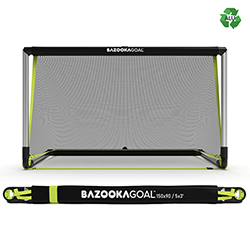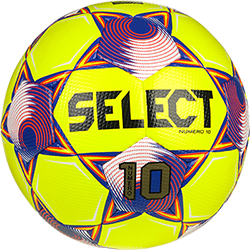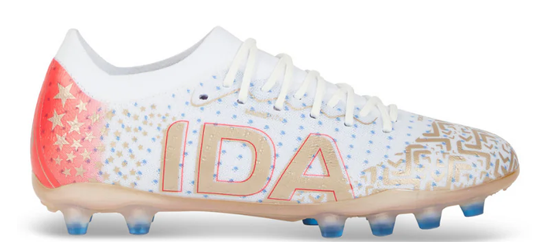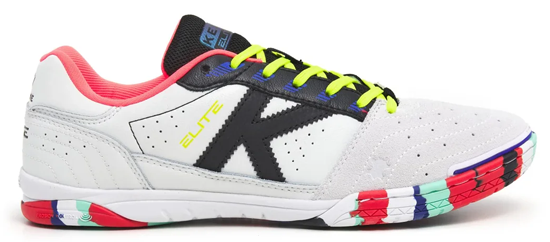We at Soccer Command regularly get questions from people about soccer goal safety. Because of this we decided to write The Definitive Guide to Soccer Goal Safety. We are all responsible for the safety of our athletes, and we all owe it to the game to be informed; players, parents, athletic directors, coaches, club administrators, game officials, and equipment providers.

The Potential Danger
Have you ever seen a goalkeeper dive into a soccer goal post? Have you ever seen a child climb up the back netting of a soccer goal like a cargo net? Have you ever seen a group of players jump up and hang from a goal cross bar for fun, or worse yet, to tip it down so they can move the goal?
If you answered yes to any of these questions, you are in good company. You and many others have witnessed potentially dangerous occurrences and are genuinely concerned for soccer goal safety. Since 1979 there have been at least 39 deaths and 57 serious injuries attributed to soccer goals tipping over and crushing people (victim's ages ranged between ages 4 to 31 years old). That works out to around one person per year. Sadly, the danger is still claiming victims. Just check out this story of a 6 year old child who was recently struck on the head by a goal tipping over. There are an estimated 15 million children playing soccer in the US on fields donning an estimated 500,000 soccer goals. With so many young athletes playing so many hours of soccer around the country each year there are countless potentially dangerous situations that pop up.
Let's take a deeper dive into soccer goal safety, how to know you are purchasing a safe regulation soccer goal, and how you can help ensure safe use of soccer goals to help prevent injury.
How do I know I am purchasing safe goals?
Most of the goals which end up causing injuries are of the 'homemade' variety. Meaning, they are fabricated in someone's garage who decided they could produce an inexpensive product using steel and their own welding skills. Obviously, this sort of design and production method leaves a lot of room for design and production errors. It is unlikely this sort of goal will be certified safe. In addition, it is far more expensive to produce an aluminum-based goal vs. a steel-based one. Because steel is a cheaper metal to use, and is easier to weld with, it is often the metal of choice when producing homemade goals. This creates a significantly heavier and a more potentially dangerous goal in the event of a tip-over. If the goal base does not have the correct dimensions, or if it is too light this also adds to the probability it will tip forward. Not to mention, the structural integrity of the goal could be compromised if not professionally produced and checked for quality.
Because of the propensity for people to do it themselves, and the tendency to gravitate toward goals with the lowest initial cost, goals end up on the market, and on our soccer fields, that really should not be there. Luckily for you, there are standards put out by the American Society for Testing and Materials (ASTM International) that outline some important aspects of soccer goal construction to ensure you are purchasing safe, high-performance regulation soccer goals. Have a look at the different standards enacted to provide you with a rudder in your soccer goal purchasing experience:
Standard Safety and Performance Specification for Soccer Goals - This standard specifies safety and performance requirements aimed at providing safer soccer goals and thereby reducing injuries and fatalities. This encompasses all goals 40 lbs and heavier.
Standard Safety and Performance Specification for Soccer Goals - This standard specifies safety and performance requirements aimed at providing for safer use of soccer goals and reducing injuries and fatalities.
Standard Safety Specification for Special Tip-Resistant Movable Soccer Goals - This specification covers safety requirements aimed at providing for safer use of soccer goals and reducing injuries and fatalities.
Guide for Safer Use of Movable Soccer Goals - This guide presents directions for the installation, use, and storage of full-size or nearly full-size movable soccer goals. It is expected that these guidelines can help prevent deaths and serious injuries resulting from soccer goal tip-over. These guidelines are intended for use by parks and recreation personnel, school officials, sports equipment purchasers, parents, coaches, and any other members of the general public concerned with soccer goal safety.
We highly recommend purchasing goals that meet these standards. It's never worth risking the well-being of athletes by purchasing goals that do not meet ASTM standards.
In addition to ASTM standards, the U.S. Consumer Product Safety Commission issued a report in 1995 called Guidelines for Movable Soccer Goal Safety that goes into some depth about soccer goal safety. In fact, it was a through a partnership with the USCPSC that these ASTM standards were born.
Proper Assembly and Installation
You've purchased ASTM certified regulation soccer goals and now its time to assemble and install them. This is one of the most important aspects of soccer goal safety as it sets the stage for the long term use of soccer goals. It is absolutely vital you assemble and install goals to exact manufacturer's specifications. Doing so helps ensure you limit the risk of structural failure and thus injury to athletes. It also limits your liability in the unfortunate event a soccer goal related injury occurs while using your goals.
Always follow manufacturer's assembly instructions. For an example of assembly instructions, check out this PEVO World Cup Goal. Not following instructions could not only create a potentially dangerous situation for your athletes, but also could cause your goal to break and/or void your warranty.
Setting goals on an even surface and properly anchoring are the two most important aspects of installation to prevent goal tip-overs. Goals that rest on a forward-leaning slope are predisposed to tip-over. Properly anchored goals stand little chance of ever tipping forward.
*Note: Make sure each goal you install has proper warning labels affixed. These should come either pre-affixed, or as stickers you affix yourself during assembly.
Regular Maintenance
Now that you've taken the time to assemble your goal to manufacturer's specifications, and installed it properly, its time to make sure to give it the care it deserves. We recommend you perform a check-up on your goals at minimum once every year. When available, follow manufacturer's guidelines for regular maintenance.
Routinely inspect goals and keep an eye out for any loose hardware, check the strength of welds, check for any corrosion, check for proper anchoring, and make sure you check for any other damaged or missing parts. Doing this will not only make your goals safer for use, but will also greatly extend the life of your investment. After all, the average cost of a pair of youth goals is over $2,000. If you spent that much on a computer or other asset you would likely put effort into maintaining it!
For a complete guide on caring for your soccer goals; check out How to Properly Care for Soccer Goals.
Always Anchor

An average youth soccer goal can weigh anywhere between 100 lbs - 250 lbs. Most goals nowadays are made from an aluminum front frame (the goal mouth) and a steel back frame. Because the front frame runs perpendicular to the ground and has nothing propping it back, when the goal is tipped forward enough, the weight of the goal will pull it forward to the ground with significant force and weight behind it. This creates a serious potential danger for players as high winds or other forces can tip the goal forward onto athletes.
Because of this potential danger, all goals should be anchored to the ground using one or a combination of means:
- Auger-style - These are like corkscrews that screw into the ground and connect to the back frame with a metal chain or cable. Pictured below: PEVO Auger-style Ground Anchors.

- Peg - Straight piece of metal driven several inches into the ground, often at a slant for added security, through a hole in the bottom of the goal back frame. Generally speaking, 2 to 4 pegs should be used to anchor a goal. Pictured below: Alumagoal Spike Ground Anchor.

- J-Hook - Like a peg, this anchor is a bent piece of metal driven at least several inches into the ground. The hook portion of the anchor wraps over the back frame. Generally speaking, 2 to 4 J-Hooks should be used to anchor a goal. Pictured below: PEVO J-Stake Ground Anchors.

- Semi-Permanent - These anchors are buried beneath the goal. A fastener clamps down on the goal's back frame protrudes just above the surface of the ground and makes for easy attachment/detachment. Pictured below: Alumagoal Permanent Ground Anchors.

- Sand Bags - Follow manufacturer's recommended number of sand bags and weight of each bag based on the goal model you are anchoring. Larger goals may need more than smaller ones. Pictured below: Alumagoal Soccer Goal Sand Bags.
-

- Ballasts - aka counterweights. These can be a cement form, a steel weight, or some other heavy item that can be used to counter the weight of the goal. They are usually fixed to the goal frame with a metal chain or cable. The Bison No-Tip Soccer Goal is a great example of a goal with built in ballasts.

- Chained Cement Footings - These are possibly the most secure way to anchor a goal. Goals are secured by pouring adequately sized footings with an 'eye bolt' or similar metal fixture coming out the top. A chain can then be strung through the eye bolt and snugly around the back frame of the goal.
*Note: Never guess what to use and how to anchor. Always follow the goal manufacturer's recommendations when choosing how to anchor and properly install anchors. It is also important to consider the soil type and consistency when determining how to anchor goals. Some anchors inserted in the ground may not hold as well in certain soil types.
Anchoring Guidelines
Per the U.S. Consumer Product Safety Commission Guidelines for Movable Soccer Goal Safety report: "A properly anchored/counter-weighted movable soccer goal is much less likely to tip over. Remember to secure the goal to the ground (preferably at the rear of the goal), making sure the anchors are flush with the ground and clearly visible. It is IMPERATIVE that ALL movable soccer goals are always anchored properly (see Figure 2).
There are several different ways to secure your soccer goal. The number and type of anchors to be used will depend on a number of factors, such as soil type, soil moisture content, and total goal weight.
Always check to make sure goals are properly anchored before practicing or competing.
If you spot a goal that is not anchored, or improperly anchored, it is advised to discontinue use of the goal, keep a safe distance away, and report it to the individual responsible. Once the goal has been properly anchored play may resume using the goal.
Properly anchoring a goal to manufacturer's specifications will all but eliminate the possibility of the goal tipping over (normal wind conditions would not tip the goal). It is the shared responsibility of schools, clubs, referees, and facility staff to ensure goals are properly anchored for all use. If you are in a position of leadership in your club, make sure you make it a point to train your staff to be vigilant in checking goals before every use.
What is the best way to anchor?
There is one method in particular that, when properly installed and maintained, eliminate the risk of soccer goal tip-over: ballast systems.
At Soccer Command we carry the SafeSoccer Goal Anchoring System which is a ballast system which secures to the back ground bar of any soccer goal, eliminating the risk of accidental soccer goal tip-over. This ballast system also doubles as wheels to easily move your goal.
Move Carefully
It is critical to exercise great caution when moving goals. Only trained, capable adults should move goals. Once goals are moved they should be re-anchored in their new location, even if that location is temporary (e.g. when a coach moves a goal during training sessions).
Never use the 'jump and hang' method to pull a goal's crossbar down to move. This can be very dangerous for reasons listed here. A safer way to lower goals to the ground is by lifting the back frame forward and allowing the goal to fall forward to the ground (assuming the area is clear). If you find you often need to move goals temporarily it is probably worth purchasing and installing wheel sets to your goals or using special equipment like a trailer and ATV-type vehicle. Check out our full selection of soccer goal wheels!
Proper Storage
Most incidents of injuries and fatalities related to soccer goal tip-over occurred outside of competition and practice (while goals were left unattended). Here are some ways to help prevent an injury when your goals are not in use:
- Remove nets - By removing nets you make the soccer goal far less interesting to bored children. The 'cargo net' for climbing on the back is gone, and it is a lot less fun shooting a ball through a goal frame than into a goal donning a net.
- Store goals indoors in a secure location - If you have the luxury of an indoor storage facility large enough to accommodate your goals you are lucky. Not only will you eliminate the possibility of children finding a goal to play on but you also help extend the life of your goal by keeping it indoors during the off season.
- Chain goals to a secure object - Often times there are strong structures near soccer fields. These could be fences, large trees, or other objects. Turn the goal facing the object and secure it with chain(s) and lock(s).
- Chain goals face-to-face - This is a good option to help ensure goals cannot tip-over on someone. Move the goals so the face of each goal is up against the other. Secure the goals together with a chain and lock on both upright posts leaving the least amount of slack in the chain as possible (see figure 4.1 in Guidelines for Movable Soccer Goal Safety).
- Turn goal on it's face - This is not the ideal option, but if you are not able to store your goal inside or chained up this is a better option than leaving it upright. If a goal is on it's face it is less interesting for children and is difficult to turn back upright. Usually you need multiple grown adults to have enough power to restore the goal's upright position, thus while it is on the ground, there is less potential for injury via tip-over.
Consider Goal Post Padding
Although it has not been widely adopted, goal post padding has proven to have a very positive effect on injury prevention.
According to this article written by Lindsay Barton Straus, JD; "After testing padded goal posts in both the laboratory and the field, the Consumer Product Safety Commission concluded that padded posts do indeed reduce significantly the number and severity of injuries, and are especially effective in reducing injuries to the head. Impact laboratory testing has shown that the force of impact is reduced between thirty-one and sixty-three percent by protective goal post padding."
The upside to goal post padding is a big one. If your goals are used for competitions allowing post padding it might be time to consider whether or not outfitting your goals with padding would be a good fit for you.
Conclusion
We hope this guide helps you understand the potential dangers of improper assembly, installation, use, and storage of soccer goals. Remember; it is everyone's responsibility to ensure soccer goal safety for our athletes.
You can do a lot to help prevent injuries through proper assembly, installation, maintenance, use, and storage, but there is no substitute for supervision. It is always recommended that children and adults practicing or competing have supervision in the event of a tip-over or other emergency. Never practice alone in the event an emergency takes place.
Soccer Command carries a full-range of regulation soccer goals for youth and adults! With our wide variety of options we have the perfect goal for you. Check out our selection of quality regulation soccer goals!
References
http://www.wtae.com/news/10yearold-crushed-to-death-by-soccer-goal-dozens-of-goals-unsecured-in-pa/36553918
https://www.astm.org/Standards
http://www.cpsc.gov/PageFiles/122392/soccer.pdf
http://www.momsteam.com/sports/soccer/safety/should-all-soccer-goalposts-be-padded
DISCLAIMER
This guide is intended for use as a general resource for information about soccer goal safety. Soccer Command does not claim or intend to imply this is an all-encompassing document. Soccer Command recommends following all manufacturer's assembly, maintenance, and storage instructions as each goal is unique.
















3 comments
Spartan Athletic Co
Great article!! Thank you very much for sharing this here. I’ve bookmarked this site to get more updates. Keep sharing !!!!
Max Jones
My wife and I have been thinking about getting soccer goals for our yard to help our kids practice the game that they love. I really like the idea of helping them be safe around the soccer goals though, and I really liked that you mentioned routinely inspecting for loose hardware and checking the strength of the welds. I’m going to have to keep that in mind if we do get some soccer goals and make sure that we keep everyone safe! http://www.ausnetindustries.com/sport-and-recreation
Zequek Estrada
I’ve actually climbed on a soccer net before, and I’m pretty lucky that I didn’t get hurt too bad. It’s why I gotta agree that removing the net is essential. Kid don’t really think about the risks of getting hurt. http://www.addaflagpoles.com.au/goal-posts